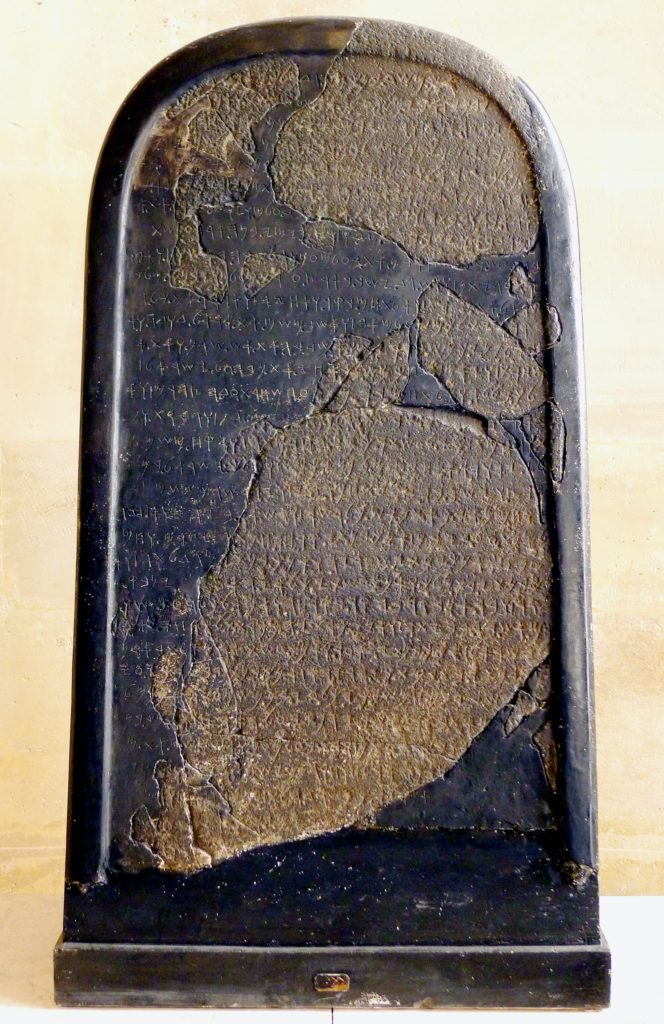Mesha Stele
The Mesha Stele, also know as the Moabite Stone, is a stone plaque discovered in 1868 near the ancient site of Dibron in modern day Jordan. It is dated to 840 B.C. and was erected during the reign of King Mesa of Moab (2Kings 3:4). this artifact is the most extensive inscription ever recovered that refers to the nation of Israel, the house of Omri, YHWH, and describes the king of Moab advising his people to dig wells in their homes. The king’s instructions were given because God commanded the armies of Israel to attack every fortified city of Moab, and to stop up every spring of water (2Kings 3:19). The inscription also references the city of Ataruz which was once occupied by Hebrews, but was taken back from the son of King Omri. This city is referenced in the Bible as Ataroth (Num. 32:34).

The stele was broken into pieces by a local Bedouin tribe after being discovered because of disputed ownership. They had heated it over a fire and then poured cold water on it, shattering it into pieces. However, a paper-mache “squeeze” impression of the full stele had been obtained just prior to its fracturing. Pieces of the original stele containing most of the inscription were later recovered and pieced together. The remainder of the stele was reconstructed from the squeeze.